
How Data Can Enrich Trend Predictions
Trend predictions can be frustrating with many being no more than a review of a few blogs and tech announcements followed by some spurious guesses. In the worst cases trends aren’t contextualised and little effort is given to sizing them or assessing their rate of travel.
So how could we improve on 2018 trend predictions and add some more rigour? What data and analysis could we add to start to size trends, to put them into context and to understand the drivers and barriers to growth?
What follows is an analysis of five key trends using a selection of free tools and information sources available online. It is the result of a discussion with the ever excellent Alison Tyrrell and some simple analysis. It's something you should be able to do yourself.
It is quite long (you can jump to the end for 5 key take-outs ) but I won’t pretend this is a rigorous analysis of trends. It is more an experiment, a prototype even, of what trends could look like if we tackled them in a different way and added more contextual data.
The five trends we have selected are: Artificial Intelligence, Virtual Reality, Augmented Reality, Autonomous Cars and Cybercrime. By no means an exhaustive list but they will serve as good examples.
We have looked at what we can learn from search and search patterns, what articles people are sharing and finally how much VC funding each trend is attracting.
So let’s begin…
Analysis 1 - Google trends (www.google.com/trends )
First up, what can Google trends tell us about people’s interest in these trends, how they compare in size and what is their direction and speed of travel.
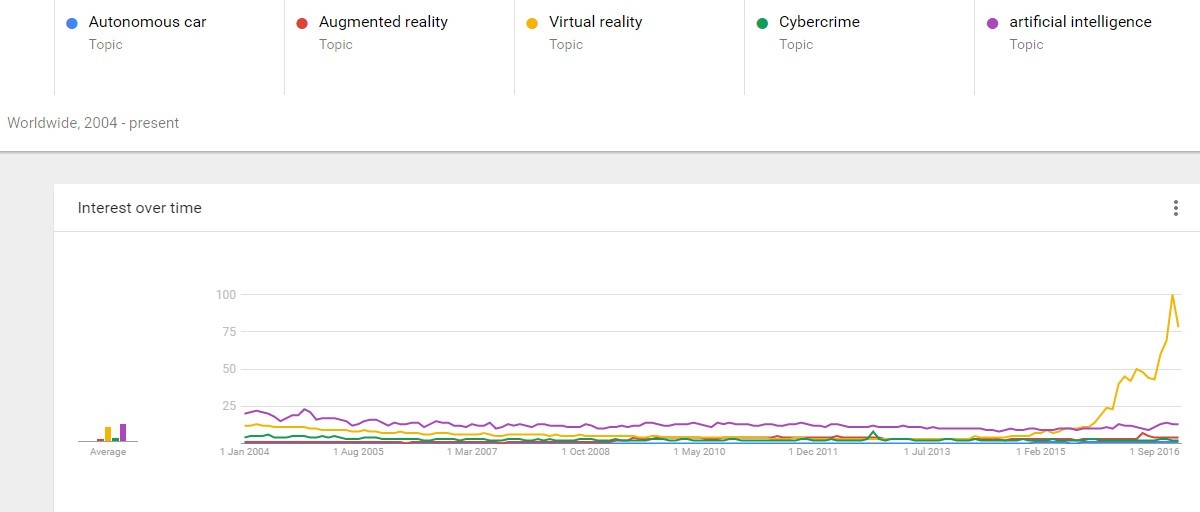
The first thing you immediately notice is how VR dominates search and how it has broken out since Oct 2015. Our other trends haven’t yet translated into consumer interest; AI is the only trend that gets close. Given all the hype about the other trends we wouldn’t have expected this discrepancy.
What is more surprising is how there has been consistent interest in AI, and to a lesser extent VR, going back to before 2004. It seems VR has turned from science fiction to reality in the last few years. Are we going to see AI follow a similar pattern? And is it going to be bigger than VR given its larger initial interest?
As VR dominates search so much we removed this term to look at the other trends in more detail to see if any else stood out.
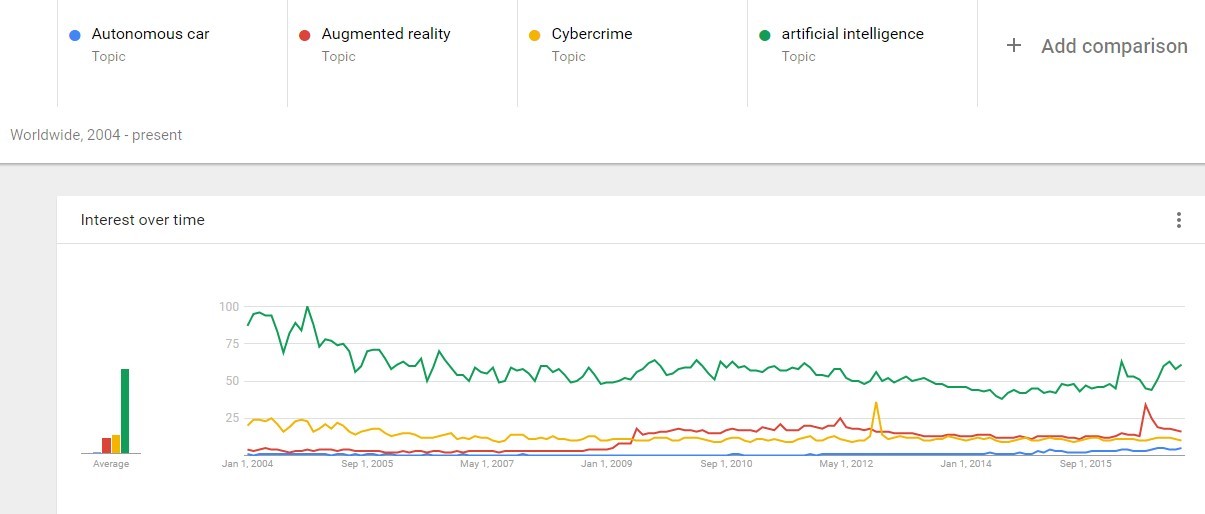
We can now see more clearly the pattern of searches for AI and how it has been decreasing over time! It appears that as more people move online the proportion of people interested traditionally techy areas like Ai decreases.
The other trends are generating minor interest apart from spikes driven by events:
- Oct 2012 for cybercrime when the 2012 cybercrime bill was passed in the Philippines
- July 2016 for Augmented Reality coinciding with the release of Pokémon Go.
As these trends develop we would expect search volumes to increase and be more driven by organic interests and less reliant on news spikes.
Analysis 2 - Google autocomplete search data (via www.Answerthepublic.com)
This nifty tool uses Google autocomplete data – the related suggestions that Google provides when you start a search - to show the related search terms people are looking for based on a key topics.
This allows you to create a richer view of search behaviour. The output is a granular look at search behaviour based on key prepositions. I recommend you have a play as it is an excellent insights tool.
Here is a sample output:
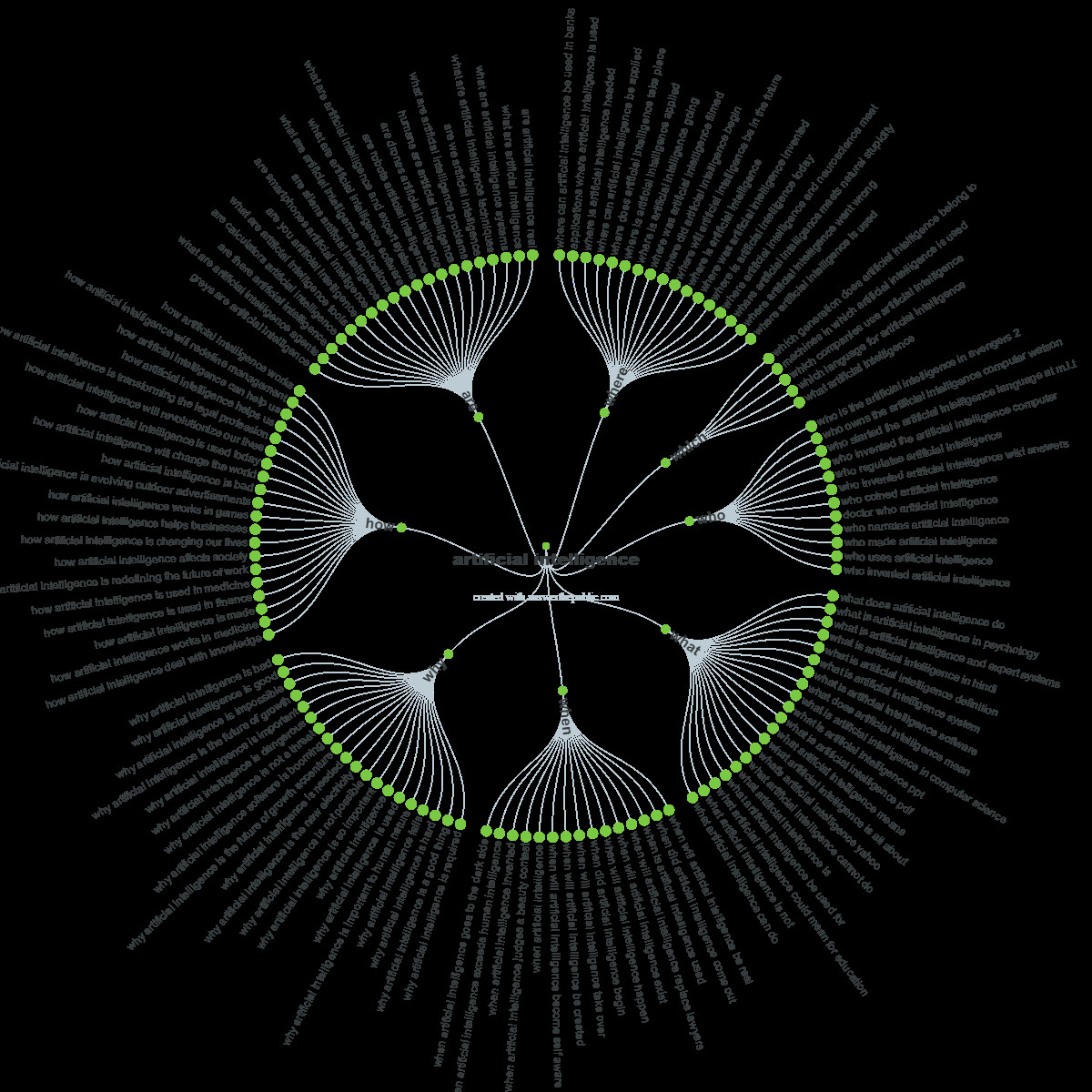
Artificial Intelligence
The first thing to note is the volume of related questions – 129 – second only to VR on 138. Interestingly a large number of these questions are around the existential threat of AI – What is it? Will it kill me? Will it steal my job?
Other searches are concerned with how AI works and what it does. From this it is clear that people’s understanding of AI is at an early stage; people have yet to work out what AI is and how they can best use it.
Sample searches include – Why AI is good? Why AI is bad? Why AI is dangerous? AI to replace jobs, AI threat to society.
Virtual Reality
In contrast searches for VR concern more practical questions and specific use cases. The questions are more positive and are about how to use the technology - not what it is.
This appears to signal that VR is at a different level of maturity to AI. Could we use this shift in search behaviour as a way to identify when AI has become more mainstream?
Sample searches include - What VR to buy? Which headset is the best? How to use VR in education? Where to study VR.
Augmented Reality
The volume of questions in much lower – 67 – and again very practical in tone. But it is clear that there is confusion about what exactly AR is and how it differs from VR.
AR is currently suffering from being lumped in with VR when it is a different entity. Pokémon Go helped popularise the term but AR has yet to go mainstream.
Sample searches include – What is AR? How to make AR, How AR works, How AR differs from VR.
Autonomous Cars
Surprisingly the volume of questions was low here as well - 44. Unlike AI there are more practical vs existential concerns about autonomous cars and their safety.
People were also interested in how the technology worked, what were the specific features of autonomous cars and when they would be available.
People are going to need convincing about the safety of Autonomous Cars and are going to need to adapt existing embedded behaviours. By observing what questions people are asking and what areas they are draw too will allows us to design a launch plan for the introduction of this technology: one that addresses their concerns as well as selling the benefits of the technology
Sample searches include – Why autonomous cars are needed, Are autonomous cars safe? What are the features of autonomous cars – parking, cruise control, autonomous driving etc.? When are autonomous cars safe?
Cybercrime
Surprisingly the volume of questions is higher than Autonomous Cars and AR – 87. But again searches are about understanding the technology, what it is and how to prevent it. The concept on Cybercrime is not yet understood and people have yet to fully grasp the implications and threats posed by this issue.
Sample searches include – What is cybercrime? What is the law on cybercrime? How to prevent cybercrime? What is the impact of cybercrime?
Analysis 3 – Most shared articles (via www.Buzzsumo.com)
Buzzsumo allows you to track content related to a term and how many views and shared it has achieved across different social platforms. Whereas search is a good measure of interest and intent. Sharing is a good measure of newsworthiness and relevance – is an article important enough to want to share it with others? Is it information that others will be interested in and want to know about?
Artificial Intelligence – 1,490k shares
Although AI has the most shares of any trend this is skewed by one video from Boston Dynamics about their Atlas robots. This has nearly 700k shares.
Other articles shared reflect search patterns as they cover examples of the application of AI action – both good & bad, and discussions about the ethics of AI.
From this we can see interest in AI is still in the realms of science fiction rather than practical application.
Virtual Reality – 864K shares
VR articles shared are more practical than AI. They focus on the future of VR, latest VR releases and examples of VR and VR products. This demonstrates that people are more open and accepting of VR as it is more present in their lives.
Shared articles are about more practical and everyday products. People are more likely to share news and reviews than the more science fiction type stories of AI.
Augmented Reality – 568k shares
As in search there is some cross-over with VR stories and people conflate the two. Other articles cover the future of AP, Pokémon Go and specific AR case studies - for example how it is being used in medicine.
Autonomous Cars – 482k shares
Given the amount interest in cars we found surprisingly few articles shared about Autonomous Cars. Perhaps this is due to the lack of tangible examples and the long roadmap for delivering fully Autonomous Cars.
Articles that were shared cover; What Autonomous cars are? What brands are investing in Autonomous cars? The ethics and impact of autonomous cars.
Cybercrime – 163k shares
The least covered trend and shares are largely driven by news events. This is less of a surprise as Cybercrime is more of a business issue that a consumer concern – but we would expect this to shift as cyber-attacks become more prevalent,
Articles shared cover; What to do about cybercrime, How to protect yourself? Cybercrime scare stories and the government’s response to cybercrime.
Analysis 4 – VC Investment in Start-Ups (www.cbinsights.com)
Looking at VC investment levels helps us understand where the big business bets are and what are the emerging technology and companies people are betting on. It is a good compliment to the human demand patterns illustrated by search.
Data is not so rich in this area but CB Insights are collecting an increasingly impressive array of data points in this area. This allows us to investigate where the money is flowing, what it is funding and how dynamic these funding areas are.
Artificial Intelligence
Unfortunately, we can only find data up to 2015 but it is interesting to see that funding levels and volume of deals are both down from the previous year. Does this suggest people have made their investments and are building use cases? Should we be looking to place bets amongst these companies or are other technologies and companies going to emerge? Or have the big guys hoovered up all the talent and are working on their own solutions in-house?
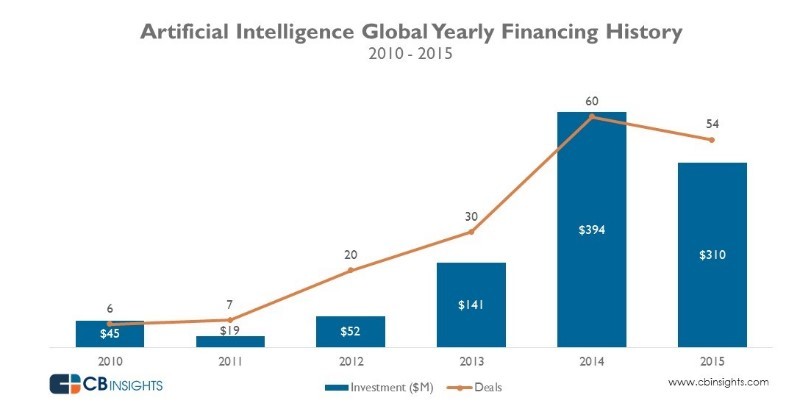
Virtual Reality/ Augmented Reality
CB insights don’t split these areas apart but it is interesting to see that in 2015 not only are investment levels twice as high than AI but there are 3 times more companies are being funded in VR/ AR than AI.
VR/AR Funding then exploded in 2016 largely driven by Google’s massive $794m investment in Magic Leap.
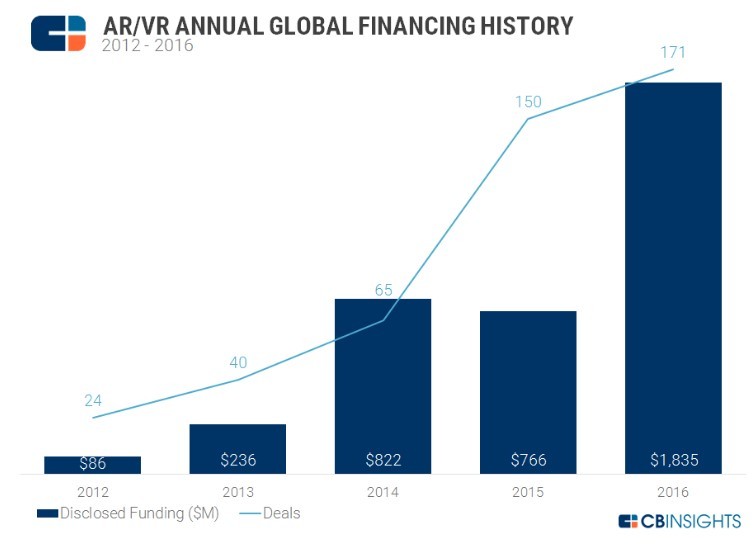
Autonomous Cars
Most of the investment in Autonomous cars is being driven by the big tech and automotive brands – Google, Tesla, BMW etc. – but the Auto Tech sector is still attracting substantial investment.
Funding is at the level of VR $847m vs $766m but that is focused on half the companies (68 vs 150) meaning people are making fewer but bigger bets.
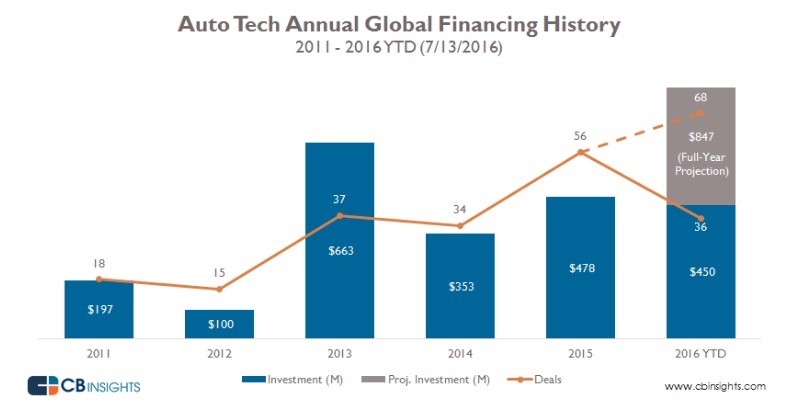
Cybercrime
Cybercrime and cybersecurity might not be attracting much consumer interest but it is attractive large amounts of funding. Funding levels are 5 times that of VR/AR and there are twice the amount of companies being funded.
This is obviously a trend that is being driven by technology and it is addressing a need that consumer are not fully aware that they need to address.
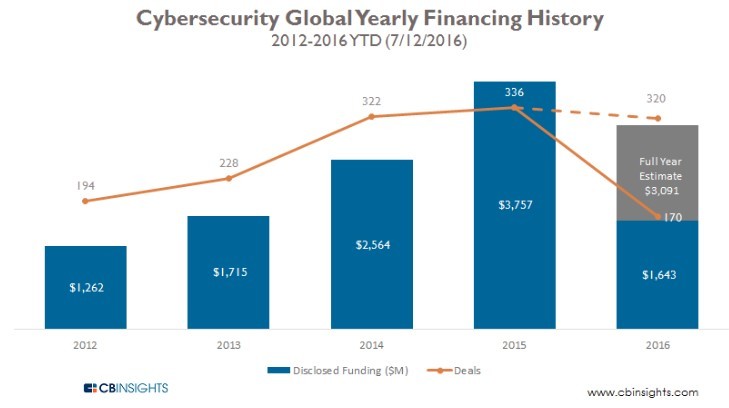
Key insights and observations
1. Most consumer interest is focused on VR
People are interested in and talking about VR as tangible products exist that have turned the fantasy into a reality.
2. …But not all trends are consumer led.
£3bn of VC money is flooding into Cybersecurity that is 1.5 times more than VR/AR and shows the scale of the issue; an issue that people remain largely unaware of.
3. Search patterns could provide an indicator of the maturity of trends
Search queries associated with trends move from theoretical/ fundamental questions – What is it? How does it work? - to more practical questions – Where can I buy it? Which one is the best? – as technology matures. But is this a leading indicator or does this lag in response to the availability of technology?
4. To drive adoption at scale AI and Autonomous cars need to address fundamental questions
Both AI and Autonomous cars raise fundamental questions that people want answered. The products that succeed will address and resolve these concern and help ‘domesticate’ what is currently seen as scary technology.
5. Broad trends are easier to analyse with data than more lifestyle focused trends and predictions
We purposefully tackled big, broad trends in this analysis. How to quantify more lifestyle focus trends or specific predictions is a harder call. After all there is a limit to what data can tell you.
Many thanks to Alison Tyrrell for her time discussing this approach and the analysis.
Trending
-
1 Jocko Willink's Inspirational Life & Net Worth
Aaqil Ashraf -
2 How Art Shapes Culture and Reflects Human Experience
Luke Fitzpatrick -
3 Meet Felix Williams and Maria Arthuer: The Parents of World Class Winger Nico Williams
Felix Yim -
4 Kai Cenat's Dad and the Enduring Public Interest
Aaqil Ashraf -
5 London Tube Stations Closed as Workers Stage Strikes
Mihir Gadhvi





Comments